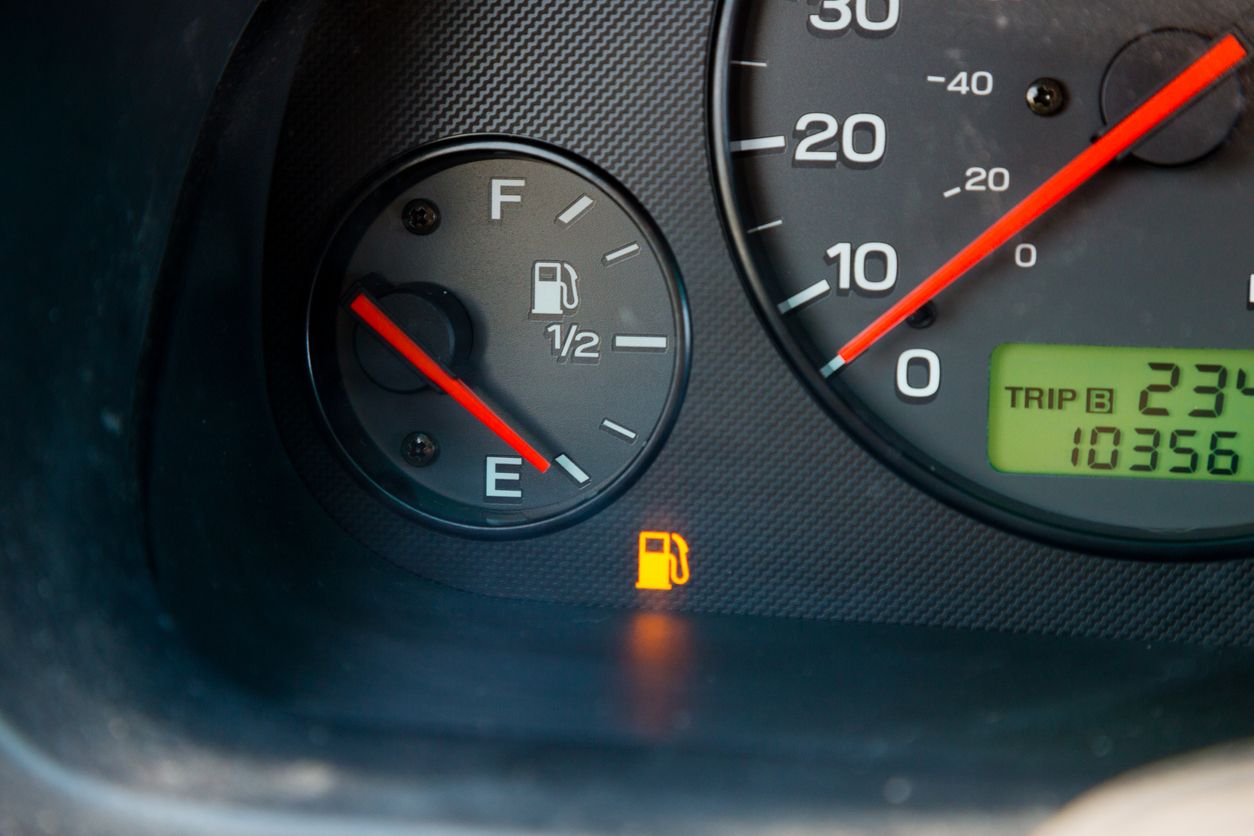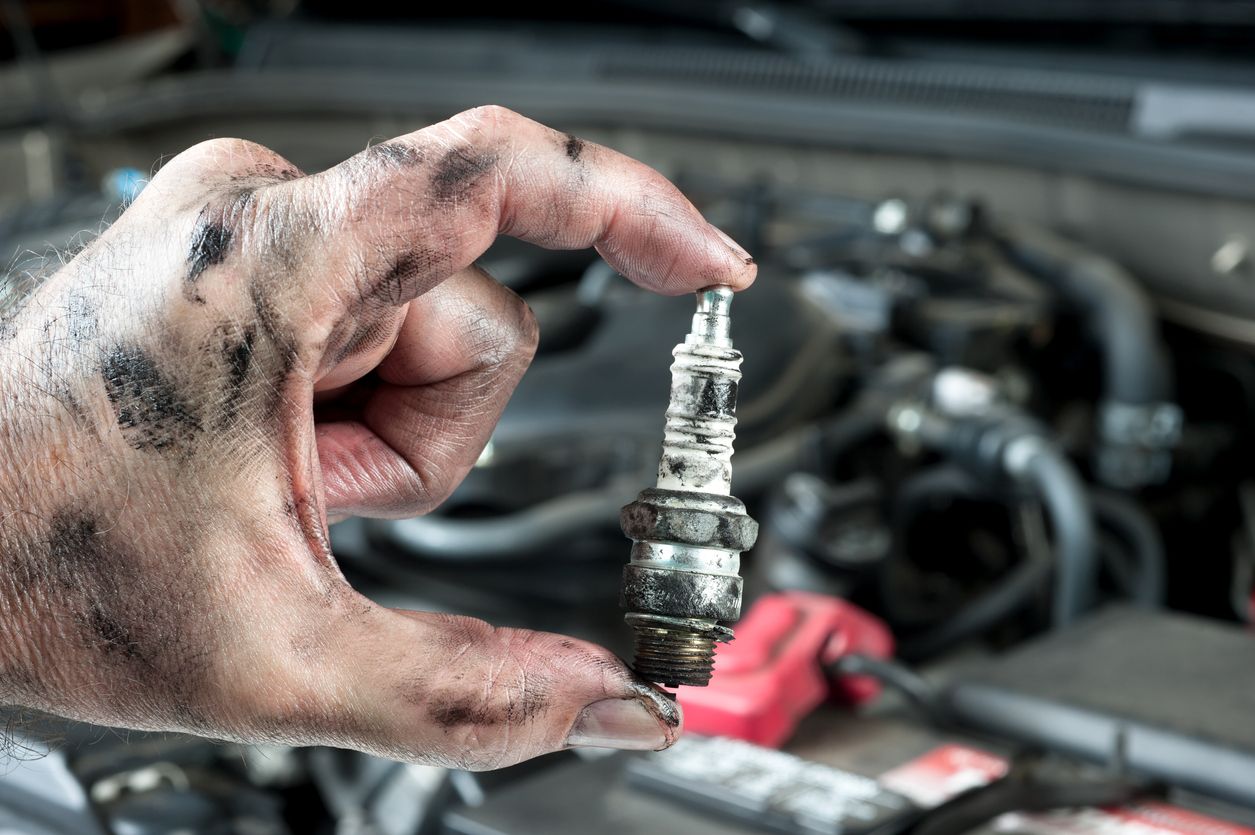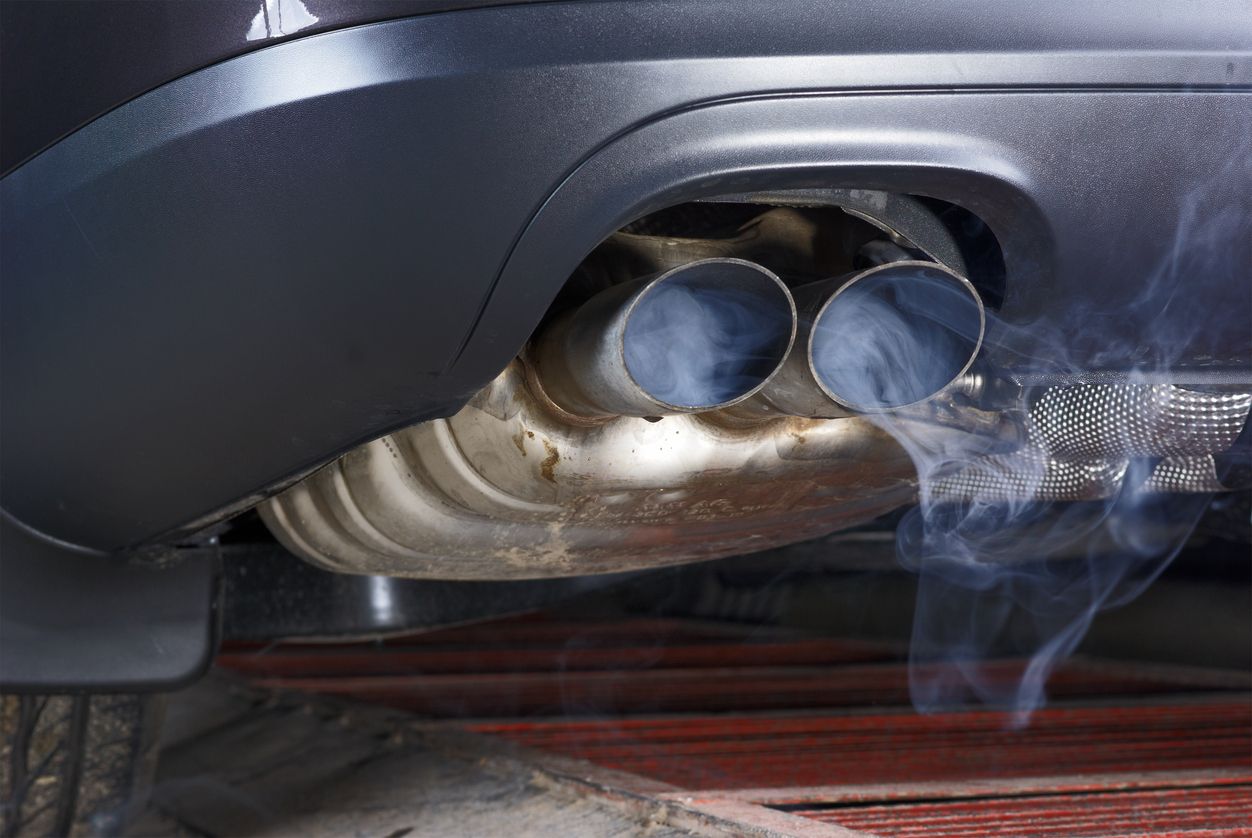Key Takeaways
- Old or dirty air filters can reduce engine efficiency, causing poor gas mileage.
- Faulty oxygen sensors can lead to incorrect air-fuel mixtures, lowering fuel efficiency.
- Underinflated tires increase rolling resistance, reducing fuel economy.
- Clogged fuel filters can lower fuel pressure, making the engine run inefficiently.
With more and more vehicles on the road reaching high-mileage milestones, some people may be left asking “Why is my car gas mileage getting worse?” After the first 100,000 miles, what started as an EPA-rated 28 MPG car might end up being more like a 20 MPG car — or worse! The loss in fuel efficiency can not only drain your gas tank faster but your wallet too.
If you’ve noticed your gas mileage getting worse as your car ages, there are many things you can do to both save on gas and boost your vehicle’s overall fuel efficiency. Read on to understand why fuel economy drops as cars age and, more importantly, what you can do to help keep your vehicle running smoothly for many miles to come.
11 Reasons Why Your Car’s Gas Mileage Is Getting Worse
It seems like common sense that, as a car gets older, it tends to get worse and worse gas mileage. In reality, it’s more accurate to say that poorly maintained cars are more likely to have worsening gas mileage over time. In fact, drivers who stick to their manufacturer's maintenance schedule are typically less likely to see any major dips in fuel economy over the life of their car.
One of the most simple solutions to keeping gas mileage up is staying on top of routine maintenance. Still, with so many parts to account for as your car reaches 100,000 or even 200,000 miles, keeping up with fuel-saving maintenance can be tricky — especially when you consider how other factors like hot weather can also affect fuel efficiency.
What should you look out for to make sure your car keeps chugging along like the day you bought it? Start by addressing the common problem areas listed below.
1. Clogged or Damaged Fuel Injectors
One of the most common culprits for a drop in fuel efficiency is dirty fuel injectors. Fuel injectors are the nozzles that spray fuel into each engine cylinder. A fuel injector’s spray pattern must be very precise to properly mix with air and combust inside the engine.
When a fuel injector becomes dirty or clogged, it may spray fuel inefficiently, think of a poorly pressurized shower head. This can quickly reduce the efficiency of your engine and lower fuel economy. In many cases, the fuel injector nozzles can be cleaned. Other times, the injectors may need replacing if internal damage is causing a bad spray pattern.
2. Old Engine Air Filter
Engines must suck in air to power vehicles. If your engine air filter is particularly dirty or clogged, your engine won’t be able to “breathe.” To compensate, the older engines would burn more fuel to travel at the same speed. Newer engines may perform more poorly trying to compensate for a clogged air filter.
This problem is particularly common among older cars that rely on carburetors. Engine air filters should be replaced approximately every 15,000 to 30,000 miles, but check your owner’s manual to be sure or have it inspected at your next oil change.
3. Dirty Oxygen Sensor
Whereas many older cars use carburetors to ensure the engine receives the proper ratio of air-to-fuel for combustion, all newer cars since about 1996 use oxygen sensors instead. An O2 sensor measures how rich or lean the exhaust gases are that exit your engine and sends a message to your car’s computer to adjust how much fuel enters the engine.
A dirty oxygen sensor may lead to incorrect measurements that cause your engine to burn too much fuel, lowering efficiency by as much as 40% according to Edmunds.
Faulty oxygen sensors are one of the most common causes of a check engine light and will likely need inspecting and possibly replacing before the 100,000-mile mark. Thankfully, O2 sensors are relatively affordable to replace, helping you save on gas and keep your vehicle’s emissions in check.
4. Clogged Fuel Filter
Fuel filters block contaminants in the fuel from traveling throughout the engine where they could damage fuel injectors and other important parts. A clogged fuel filter can lower fuel pressure and cause your engine to run poorly.
For older cars especially, it’s important that fuel filters get changed approximately every two years or every 30,000 miles. If you suspect a dirty fuel filter to be the cause of your decreased gas mileage, bring your car into your local Firestone Complete Auto Care for a fuel pressure test.
5. Worn Out Piston Rings
The piston rings in your engine cylinders form a seal against the cylinder walls to create compression. When piston rings become worn out, they aren’t able to create that seal and the engine loses pressure. As a result, fuel efficiency goes out the window.
Engine oil not only helps lubricate the piston rings, it also contributes to fuel efficiency. The best solution is to make sure your car has regular oil changes with the manufacturer-recommended oil type found in your owner’s manual.
6. Bad Ignition System Parts
The ignition system includes coils, spark plugs, and wires that are responsible for combusting the air-fuel mixture in the engine. If any of these parts are malfunctioning, it may be causing the engine to misfire. A misfire occurs when the fuel in an engine cylinder does not combust. Since unburnt fuel cannot power your vehicle, this ends up wasting gas and lowering your fuel economy.
You may experience rough idling, stumbling, or an overall decrease in power from the engine if the ignition system is to blame. The most common culprit inside a failing ignition system is the spark plugs.
7. Old or Incorrect Engine Oil
There’s a common myth that older cars should use thicker engine oil to prevent leaks. The thinking goes that since internal seals and gaskets become brittle and shrink with age, thicker oil would be less likely to seep through the cracks.
Specially formulated “high mileage engine oils” can do this by using seal conditioning additives to help older seals become more flexible and do a better job sealing. In addition, the viscosity is slightly increased to help worn piston rings seal better. However, thicker oil actually creates more resistance between engine parts, which lowers fuel efficiency.
The right motor oil is essential to keeping modern engines lubricated and protected. The best thing you can do to keep your car’s gas mileage up is to perform regular oil changes with the type of oil specified in your owner’s manual. High mileage engine oils may help reduce oil leaking and oil consumption but it will take away some of the potential fuel efficiency.
8. Dirty Mass Airflow Sensor
Mass airflow sensors measure the amount of air flowing into the engine. Like an oxygen sensor, the mass airflow sensor sends data to the onboard computer to calculate the correct air-to-fuel ratio in the engine and the computer adjusts fuel injection accordingly. However, a dirty airflow sensor will cause the car’s computer to miscalculate the proper air-fuel mixture, leading to decreased fuel efficiency or even engine stall. Mass airflow sensors should be cleaned with a special cleaning spray.
9. Underinflated Tires
Low-pressure tires are a common cause of worsening MPG because an underinflated tire has increased rolling resistance with the road and a slightly smaller effective diameter. Modern cars come with a tire pressure monitoring system (TPMS) to notify drivers when their tires need more pressure, but the warning is only triggered after a significant loss of PSI. Even running five PSI below recommended pressure is enough to create drag and lower fuel economy even if the TPMS doesn’t yet display a warning.
One of the easiest things you can do to keep up fuel efficiency is to regularly check your tire pressure and top-up with air as needed. Another smart option is to use Bridgestone Ecopia tires, which are made with fuel economy in mind. Ecopia tires feature a low rolling resistance tread designed to help you save both money and fuel with fewer trips to the gas pump. While it’s best to pair Ecopia tires with other gas-saving maintenance, the fact is fuel-efficient tires go a long way towards a greener, more cost-effective ride.
10. Worn or Stuck Brakes
Not only is it dangerous to drive with worn-out brake parts, but sticky brakes could also be causing your MPG to plummet. A stuck caliper or sticky brake pads, for example, create resistance to your vehicle’s forward motion. Brake drag means your engine must constantly fight with the brakes just to move, causing fuel efficiency to drop dramatically. Be sure to check your brakes regularly — or simply bring your car into Firestone for a comprehensive brake inspection.
11. Poor Alignment
If you’ve been driving for a while with a steering wheel that doesn’t sit straight, chances are your wheel alignment is costing you money at the pump. Just like with low-pressure tires, misaligned wheels create resistance to traveling straight down the road. Constantly fighting this resistance requires more effort from the engine and hurts fuel economy. Luckily, wheel realignment is a simple fix that can be done at any Firestone Complete Auto Care location near you.
Get the Most Out of Your Gas Mileage
Whether your car needs new tires or a new fuel filter, your local Firestone Complete Auto Care technician can get to the bottom of your fuel problems and make things right. Make an appointment today!



